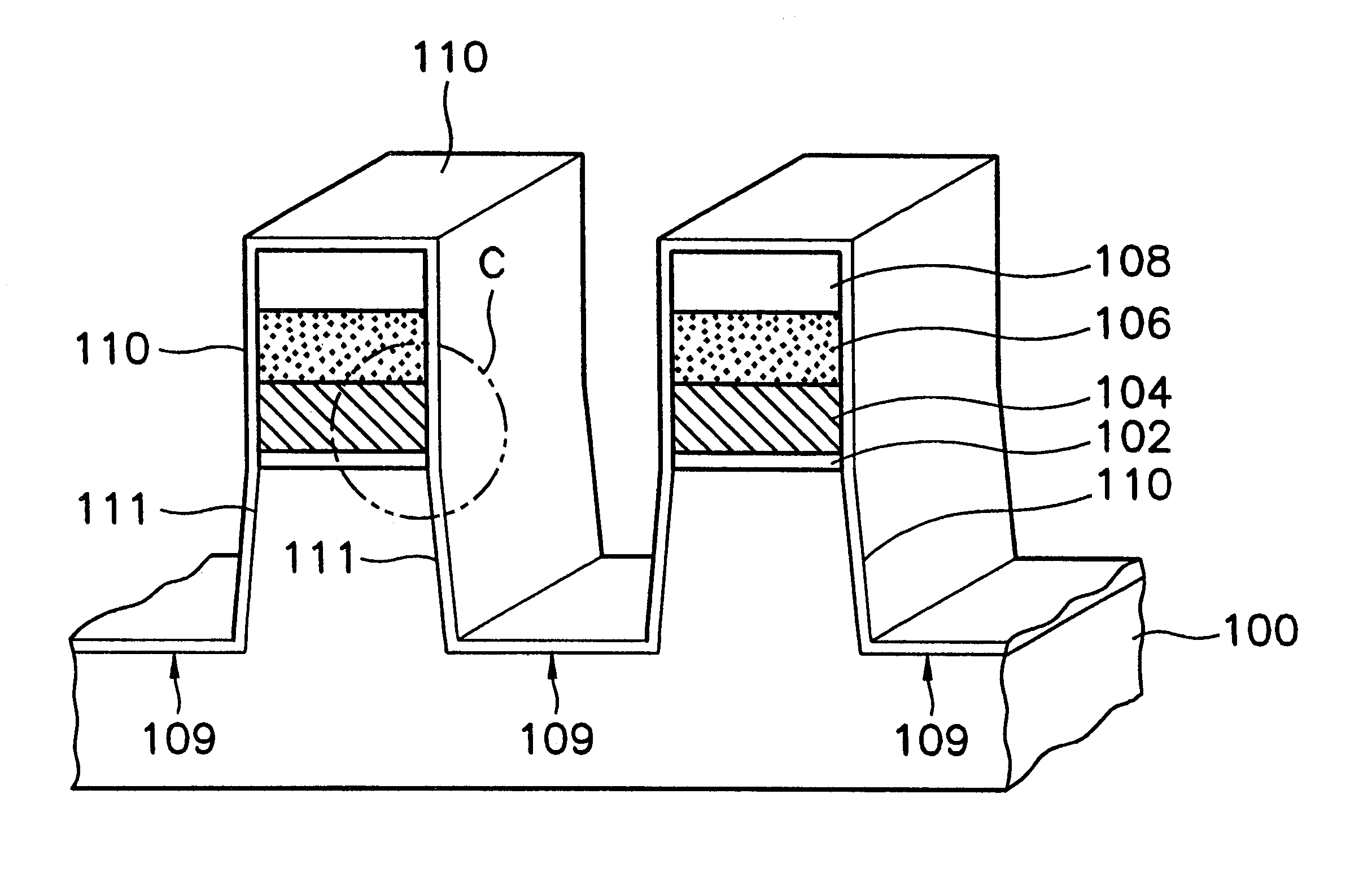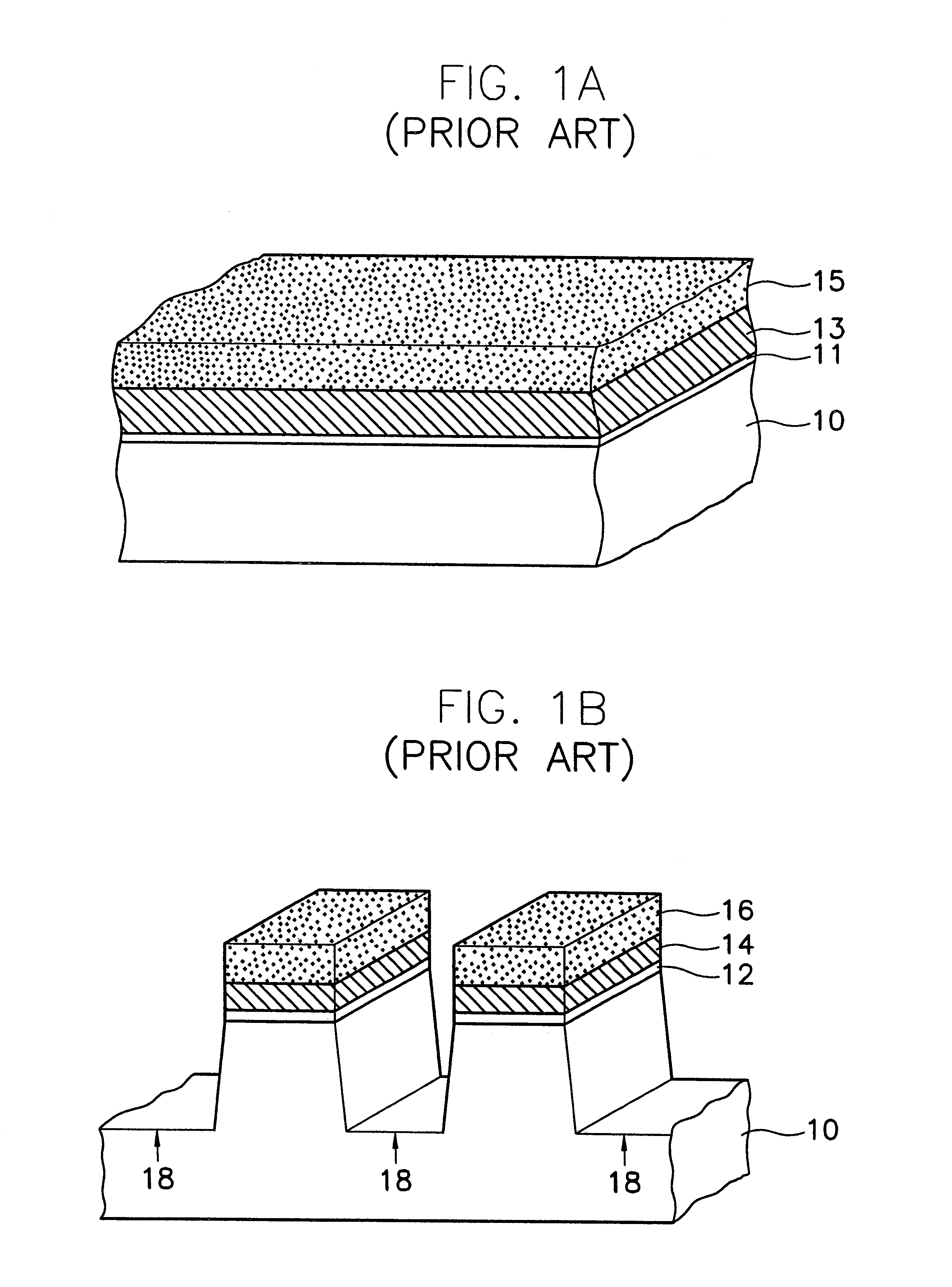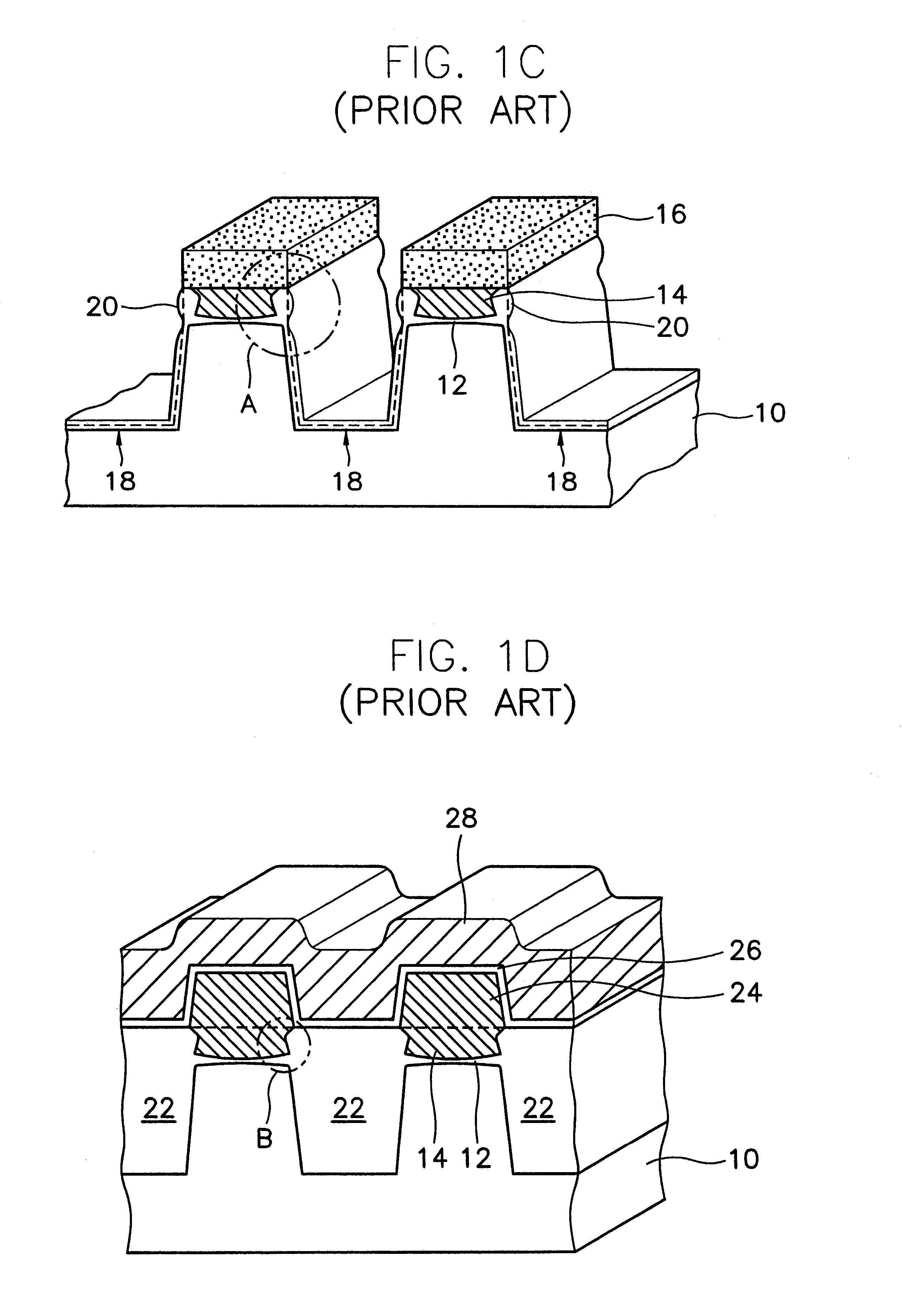Method for self-aligned shallow trench isolation and method of manufacturing non-volatile memory device comprising the same
a non-volatile memory and shallow trench technology, applied in the direction of semiconductor devices, basic electric elements, electrical apparatus, etc., can solve the problems of limited layout scalability, limited alignment tolerance, and isolation structure between individual cells within memory cell arrays
- Summary
- Abstract
- Description
- Claims
- Application Information
AI Technical Summary
Problems solved by technology
Method used
Image
Examples
Embodiment Construction
Hereinafter, preferred embodiments of the present invention are described with reference to the accompanying drawings. Whenever a layer, structure, or pattern is described herein as being on, lying over, or covering another layer, pattern, or structure, it is meant that an interceding layer, pattern, or structure may or may not be included.
FIGS. 3A to 3H are perspective views illustrating a method of manufacturing a non-volatile memory device using a self-aligned shallow trench isolation process according to the present invention. Referring to FIG. 3A, a silicon oxide layer or silicon oxynitride layer is grown on a semiconductor substrate 100 comprising a material such as silicon, to form an oxide layer 101 which is to be used as a gate oxide layer (e.g., tunnel oxide layer) of a cell transistor. A polysilicon layer or an amorphous silicon layer is deposited on the oxide layer 101 to a thickness of about 300 to 1000 .ANG. via the LPCVD method. Then, the layer is doped with a high-co...
PUM
| Property | Measurement | Unit |
|---|---|---|
| temperature | aaaaa | aaaaa |
| thickness | aaaaa | aaaaa |
| thickness | aaaaa | aaaaa |
Abstract
Description
Claims
Application Information
 Login to View More
Login to View More - R&D
- Intellectual Property
- Life Sciences
- Materials
- Tech Scout
- Unparalleled Data Quality
- Higher Quality Content
- 60% Fewer Hallucinations
Browse by: Latest US Patents, China's latest patents, Technical Efficacy Thesaurus, Application Domain, Technology Topic, Popular Technical Reports.
© 2025 PatSnap. All rights reserved.Legal|Privacy policy|Modern Slavery Act Transparency Statement|Sitemap|About US| Contact US: help@patsnap.com



